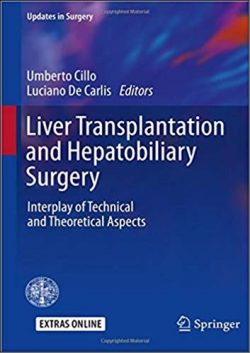This book offers a comprehensive, practical resource entirely devoted to Contrast-Enhanced Digital Mammography (CEDM), a state-of-the-art technique that has emerged as a valuable addition to conventional imaging modalities in the detection of primary and recurrent breast cancer, and as an important preoperative staging tool for women with breast cancer. CEDM is a relatively new breast imaging technique based on dual energy acquisition, combining mammography with iodine-based contrast agents to display contrast uptake in breast lesions. It improves the sensitivity and specificity of breast cancer detection by providing higher foci to breast-gland contrast and better lesion delineation than digital mammography. Preliminary results suggest that CEDM is comparable to breast MRI for evaluating the extent and size of lesions and detecting multifocal lesions, and thus has the potential to become a readily available, fast and cost-effective examination.
With a focus on the basic imaging principles of CEDM, this book takes a practical approach to breast imaging. Drawing on the editors’ and authors’ practical experience, it guides the reader through the basics of CEDM, making it especially accessible for beginners. By presenting the key aspects of CEDM in a straightforward manner and supported by clear images, the book represents a valuable guide for all practicing radiologists, in particular those who perform breast imaging and have recently incorporated or plan to incorporate CEDM into their diagnostic arsenal.
1. Introduction.- 2. Mammographic breast density and its effects on imaging.- 3.Physics and Practical Considerations of CEDM.- 4.Contrast Media in CEDM.- 5.An overview of the Literature on CEDM.- 6.Comparison between breast MRI and Contrast-Enhanced Digital Mammography.- 7.Implementation of Contrast Enhanced Mammography in Clinical Practice.- 8.Artefacts in CEDM.- 9.CEDM Lexicon and Imaging Interpretation Tips.- 10.Pitfalls and Limitations of CEDM.- 11.Benign Lesions.- 12.High Risk (B3) Lesions.- 13.Malignant Lesions.- 14.Case Studies.
Dr. Jacopo Nori, MD
Dr. Jacopo Nori is a consultant breast radiologist and the Chief of Breast Imaging at Careggi University Hospital in Florence, Italy. He has completed attachments at the Institute Gustave Roussy in Paris, Montpellier University Hospital in France and the Memorial Sloan Kettering Cancer Center in New York. In addition to breast tomosynthesis and tomo guided biopsies , magnetic resonance imaging and contrast enhanced breast imaging, Dr Nori’s interests also include radiofrequencyand laser ablation of breast lesions and B3 lesion removal with VABB systems . He is an author and co-author of numerous abstracts and publications in national and international journals, as well as two imaging books – one on interventional radiology procedures in senology and the other on mammography of ductogalactographic investigation in senology.
Dr Maninderpal Kaur, MBBS, MRAD
Dr Maninderpal is a breast-imaging radiologist at the Department of Radiology in Kuala Lumpur Hospital, Malaysia. Her undergraduate training was obtained in Bangalore University, India, while she did her postgraduate radiology training in University Malaya in Malaysia. Dr Maninderpal has a keen interest in breast imaging. She pursued a Fellowship in Breast Imaging under the Ministry of Health Malaysia. She was trained in breast imaging in Gustave Roussy Cancer Institute, Paris and Careggi University Hospital, Florence, Italy.
Her current clinical radiological practice incorporates all aspects of breast imaging from mammography, digital breast tomosynthesis, ultrasound, magnetic resonance imaging through to contrast enhanced breast imaging as well as breast interventional techniques. Since 2017, she has been instrumental in pioneering contrast enhanced breast imaging in Malaysia. She has a keen interest in the field of research and is an author and co-author in several abstracts and publications in international journals and congresses.
This book offers a comprehensive, practical resource entirely devoted to Contrast-Enhanced Digital Mammography (CEDM), a state-of-the-art technique that has emerged as a valuable addition to conventional imaging modalities in the detection of primary and recurrent breast cancer, and as an important preoperative staging tool for women with breast cancer. CEDM is a relatively new breast imaging technique based on dual energy acquisition, combining mammography with iodine-based contrast agents to display contrast uptake in breast lesions. It improves the sensitivity and specificity of breast cancer detection by providing higher foci to breast-gland contrast and better lesion delineation than digital mammography. Preliminary results suggest that CEDM is comparable to breast MRI for evaluating the extent and size of lesions and detecting multifocal lesions, and thus has the potential to become a readily available, fast and cost-effective examination.
With a focus on the basic imaging principles of CEDM, this book takes a practical approach to breast imaging. Drawing on the editors’ and authors’ practical experience, it guides the reader through the basics of CEDM, making it especially accessible for beginners. By presenting the key aspects of CEDM in a straightforward manner and supported by clear images, the book represents a valuable guide for all practicing radiologists, in particular those who perform breast imaging and have recently incorporated or plan to incorporate CEDM into their diagnostic arsenal.
Provides detailed information on a new, advanced breast cancer imaging technique (CEDM) and image interpretation
Enriched by illustrated case studies
Written by experts in the field
Written by experts in the field
Aims at is providing breast radiologists a guide to assess and interpret CEDM images in their breast imaging practice
Offers comprehensive information on a new advance breast cancer imaging technique (CEDM) and image interpretation





